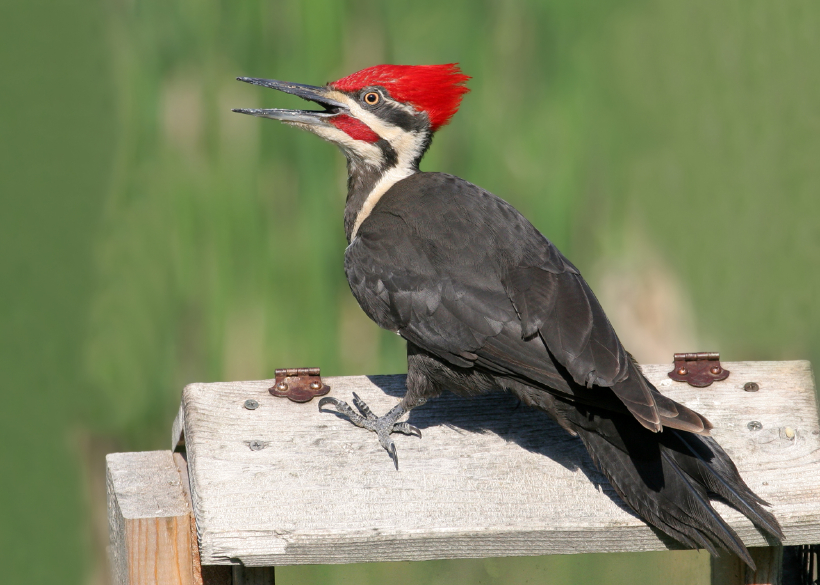Dryocopus pileatus
Pileated Woodpeckers are larger-than-life birds! Everything about them is big and bold. At 16-17 inches, they are the largest North American woodpecker we regularly encounter. Their plumage is striking in appearance. Their loud vocalizations ring out through the woodlands. No wonder the Pileated Woodpecker was the model for that famous cartoon character created by Ben (Bugs) Hardaway.
Besides size, the next thing to impress us when viewing Pileated Woodpeckers is the bright red crest which is present on both sexes, young and old. You can differentiate the sexes in that the male’s red begins at the base of the bill and extends to the nape of the neck. With females the red crest begins behind a yellow-brown forehead. Only the males have a matching red moustachial stripe. Body plumage, wings, and tail are mostly a dull-black. Note the contrasting stripes of white, red, and black in the facial pattern.
Pileated Woodpeckers are resident over much of the eastern United States, across mid-latitude Canada, and then south into the U.S. west of the Rocky Mountains. They are a denizen of forested areas when mature trees are present. Dead and decaying trees are favorite foraging sites as well as sites for excavating nest cavities. With their oversized bills, these birds are well suited to such house-building tactics. Many other species depend on holes created by Pileated Woodpeckers for their own nests in subsequent years. Over-mature trees also provide ample opportunity for finding their favorite foods: carpenter ants and wood-boring beetles. This primary diet is supplemented with the fruits and nuts of arboreal plants. Occasionally they come to suet baskets or large platform feeders stocked with nutty mixes like Aspen Song® Nut & Fruit Woodpecker or Just Desserts®.
Pileated Woodpeckers are very territorial and defend their home vigorously. Listen for their loud: “CUK..CUK…CUK!.” You will recognize it as a favorite Hollywood soundtrack call. They also assert their ownership by drumming with their bill on resonate wood. If you do not hear them, another clue to their presence is large excavations in trees and logs. These are typically long, vertical openings in decaying wood. The woodpeckers use their chisel-like bill to strip shards of wood off the tree as they seek their insect prey. When you find such a site examine the wood pieces on the ground. Often you will see the bored channels of carpenter ants in them.
If you have mature woods in your neighborhood, you may have Pileated neighbors. They should make their presence obvious. Keep an eye out for this awesome bird. You may be one of the lucky few who have them visit your feeding stations.
Reference
Bull, Evelyn L. and Jerome A. Jackson. 1995. Pileated Woodpecker (Dryocopus pileatus), The Birds of North America Online (A. Poole, Ed.). Ithaca: Cornell Lab of Ornithology.
